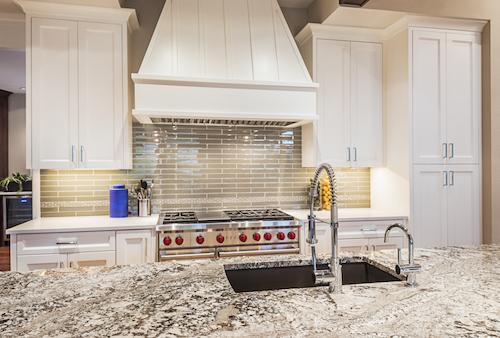Learn the Fascinating History and Exciting Future of Tile Backsplashes
 The early backsplashes for kitchens were not ornamental but rather practical. They were created to guard against splashes of water, oil, tomato sauce, and other messes during cooking and cleaning. As a result, they frequently stood little more than 4 inches tall. As here is where the most security is required, they were occasionally only discovered beneath the sink and stove in some homes.
The early backsplashes for kitchens were not ornamental but rather practical. They were created to guard against splashes of water, oil, tomato sauce, and other messes during cooking and cleaning. As a result, they frequently stood little more than 4 inches tall. As here is where the most security is required, they were occasionally only discovered beneath the sink and stove in some homes.
Backsplashes expand
The first significant shift in kitchen backsplash design was the acceptance of the backsplash as both a decorative and a functional component. This prompted designers to gradually cover more and more of the wall with the backsplash. The 4-inch backsplash strip was first installed above all of the counters, across the whole perimeter of the kitchen.
This strip was occasionally constructed of tile and other times it was the same stuff as the counter. Many homes had backsplashes that extended up to the bottom of top cabinets by the 1950s, and you can still get backsplash tile that extends all the way to the ceiling today.
Decorative tile came to be in fashion
The rise in popularity of ornamental backsplash tile for kitchens was another significant shift. Unfortunately, this has produced a few looks that now feel quite old. You can grasp the idea by picturing a yellow kitchen from the 1970s or 1980s with a yellow backsplash tiled with accent tiles depicting fat brown mushrooms.
It’s crucial to emphasize that ornamental tile isn’t necessarily a poor choice. In reality, today’s leading designers successfully use decorative tile in projects for prestigious clients like Scarlett Johansson. The secret is to pick a decorative tile that can stand on its own aesthetic merits and is unrelated to a current trend in home décor.
Going organic
Bold ornamental tile started to make way for more natural choices in the 1990s. The backsplash was frequently covered with glossy ceramic tiles or a border of colored mosaic tiles, with the remainder of the backsplash being covered in matte stone tiles in a neutral tint. As some consumers choose to utilize huge marble or granite tiles that match their stone worktops for their backsplash today, we are beginning to see an echo of this trend.
The development of subway tile
It would be impossible to discuss the history of kitchen backsplash design without including subway tile. Early in the new millennium, a 35 version of this rectangle tile first appeared on the market. It offered a tidy appearance and was frequently used in conjunction with a mosaic tile accent strip. With an expanding selection of sizes and colors, there is a huge increase in interest in subway tile alternatives today.
Smaller, elongated subway tiles have been developed as a means to combine the sleek appearance of subway tile with the visual intrigue of mosaic tile in one product, while large-format subway tile put in a grid (rather than offset) pattern is popular for a European style. The switch from ceramic subway tile to glass subway tile, which contributes to under-cabinet spaces’ illumination with its light sheen, has been one extremely significant advance.
Are you unsure of what to do about your backsplash?
Visit our tile showroom or schedule a consultation with a tile design specialist for ideas. Reach out to Mission Tile West at 626-799-4595 to learn more.
